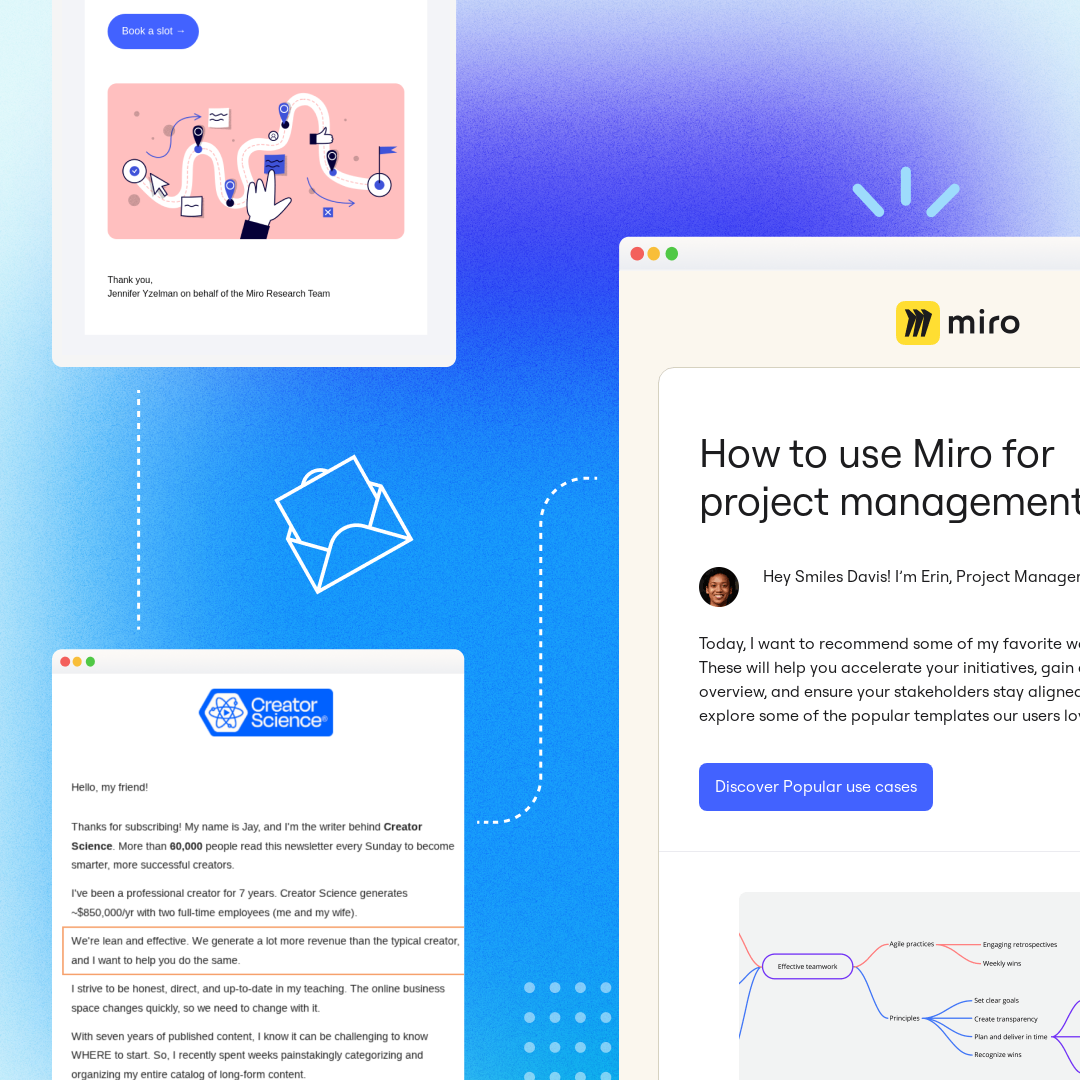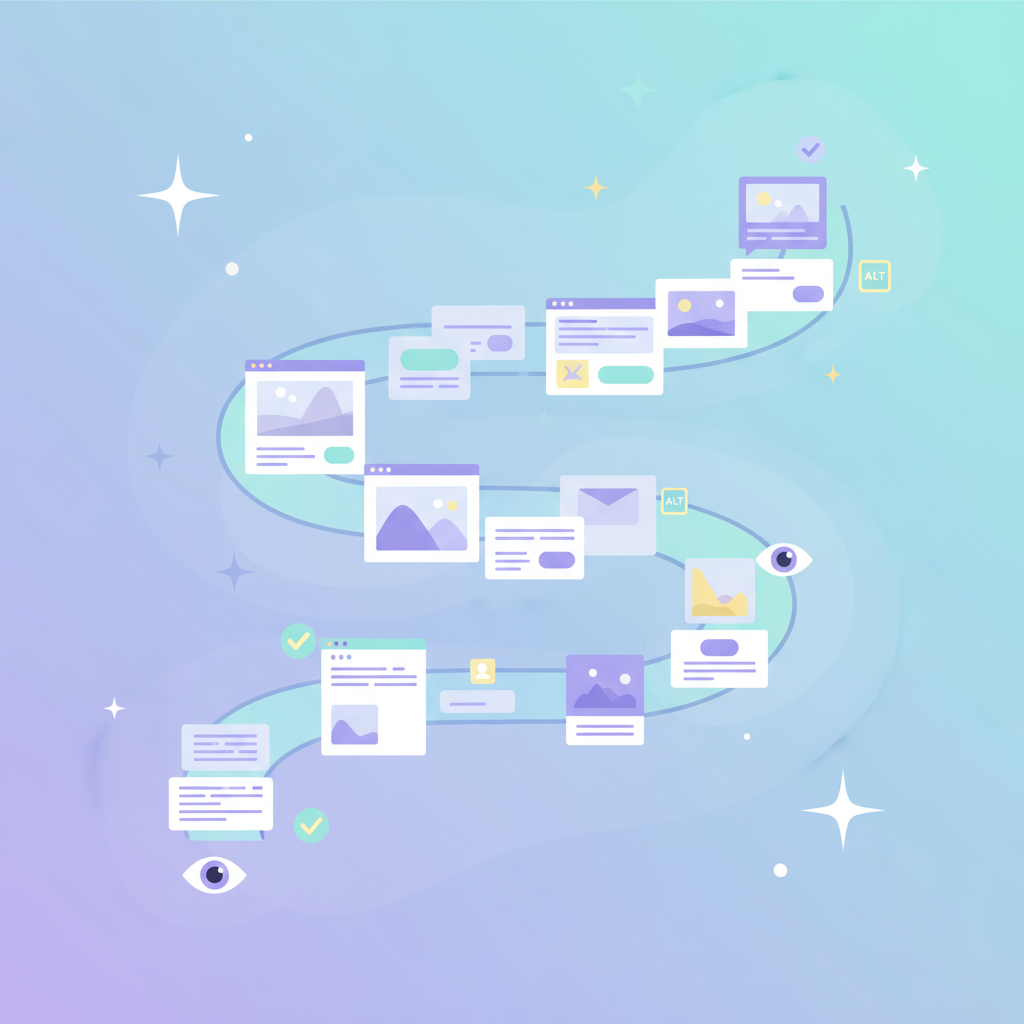
What do customers think about your brand’s products? The best way to find out is to ask them directly, which you can do via strategic email campaigns.
Email makes gathering authentic product reviews quick and easy. By collecting sincere feedback, you can build trust, increase sales, boost loyalty, and innovate product improvements.
That said, requesting reviews via email requires precise timing, personalized messaging, and lots of engagement optimizations. But don’t worry—we’ll walk you through some key steps to create email campaigns that deliver the valuable feedback you need.
Why product reviews matter
Product reviews do more than confirm that you're meeting customers’ needs. Sincere feedback drives loyalty and sales, offers valuable customer insights, and helps you develop a strategic product development roadmap.
- Fosters customer loyalty: Requesting and listening to feedback makes your customers feel valued and heard. It demonstrates that you prioritize customer satisfaction, which helps you build stronger, long-term relationships. Review requests also act as re-engagement emails by starting new conversations with customers.
- Increases sales: Social proof drives sales. According to a recent survey by Power Reviews, 90% of potential customers use online reviews to make purchasing decisions. In fact, reviews have more influence over purchasing decisions than product prices. Turning product reviews into customer testimonials and encouraging reviews on third-party sites can significantly boost sales.

- Builds Customer 360 insights: Customer feedback delivers insights into customer needs and sentiments, enriching Customer 360. Exactly what is Customer 360? It’s a unified, 360-degree view of customer data. It empowers you to tailor products and customer experiences to meet individual needs and preferences.
- Drives product improvements: Sincere customer feedback reveals what target customers like/dislike about your products. It provides key insight into their value, functionality, and usability, unlocking large-scale development opportunities.
How to create an email campaign to collect product reviews
Want to unlock the power of product reviews? Let’s explore how to create email campaigns that encourage customers to share their feedback.
Segment your audience
Like promotional emails, product review requests shouldn’t be sent to every subscriber.
If subscribers haven’t had the chance to try your product, product review requests will feel irrelevant and may trigger unsubscriptions. So, only send review email requests to customers recently trying your product.
You can do this by segmenting your email list based on where customers are in the buying cycle. Target loyal customers, recent purchasers, and first-time buyers with tailored email campaigns. This ensures that you’re sending emails to customers most likely to respond with insightful feedback.
Write a compelling email subject line
According to Superoffice, 33% of people open an email based on the subject line.

To get the click-through rates you want, your email subject lines should be personalized, relevant, and engaging. Here are some examples:
- Did you love [product]? Or hate it? Let us know!
- We value your opinion — help us improve!
- We want YOU to help us make our product better!
- Up for a discount? Share your feedback for 10% off!
Learn more > Tips for writing open worthy subject lines.
Optimize for customer engagement
A successful email marketing strategy relies on customer engagement. Here are some key email elements you need to encourage interactions.
- An attractive email design: With the right layout, color scheme, typography, and images, you ensure easy readability and promote interaction. Use these engagement-boosting email design best practices to help you create a design that boosts conversion rates.
- Gratitude and value: Thank customers for reading the email and explaining why their feedback is so important. Also, consider including a personalized Gmail email signature with your content details to build trust and encourage customers to engage with your review request.
- Personalized, relevant content: Personalized email content motivates engagement. Use customer data platform (CDP) data to tailor messages to individual customers. What is a CDP? It’s a centralized platform that collects and unifies customer information, building comprehensive customer profiles.
- Incentives: Offering a small discount can motivate customers to leave reviews, especially first-time buyers. That said, incentives can (sometimes) generate insincere reviews, so stress the importance of honesty.
- A strong call-to-action (CTA): Your CTA should direct readers straight to the reviews submission page. Use clear CTAs with bold buttons and typography to make it stand out.
- Mobile responsiveness: If your emails are slow to load or don’t display correctly on mobile devices, your bounce rate will spike. Leverage solutions that offer advanced mobile optimization features — such as Beefree— to create responsive emails every single time.
Ask specific, concise questions
Complex, drawn-out questions that are too open-ended can disengage customers. So, get straight to the point with concise, direct questions. Here are some examples:
- What did you think of [specific product feature]?
- How often do you use our product?
- What are your favorite/least favorite features?
- How likely are you to recommend this product?
- What could we do to improve our product?
Use a mixture of closed and open-ended questions to increase your chances of receiving meaningful responses.
Make it easy to respond
The easier it is for customers to leave a review, the more responses you’ll receive. So, make the process as seamless and convenient as possible. One way to do this is with survey emails.
Email surveys have high response rates. They can be completed within the email with minimal effort, which is a big plus for busy customers. And, they can generate a wealth of quantitative data and metrics that are quick to analyze, leading to faster improvements. BeeFree has an extensive collection of email survey templates to suit every need.
For longer review requests, include a CTA that directly links to the review submission page. Review forms should use simple, clear language, be optimized for mobile, and have a progress bar.
You could even provide your telephone contact details to allow customers to leave a review via telephone. It’s the preferred communication method for 55% of Baby Boomers according to Hubspot, so it’s worth considering.
Leverage small business telephone services from Vonage to access call center capabilities like virtual receptionists and CRM integrations, streamlining processes.
Also consider directing customers to leave reviews on popular review sites, such as Google and Amazon.
Optimize email timings
If you send product review requests too early, there’s a chance your customers won’t have tried your product yet. But if you send them too late, your customer might have forgotten their experience.
So, when’s the best time to request reviews?
Aim to send review requests within 7-14 days post-purchase. This gives customers a chance to try the product a few times, leading to more sincere, meaningful reviews. Plan for seasonal surges such as Black Friday and incorporate them into your schedules.
Key takeaways
Do email campaigns work for gathering valuable product reviews that drive improvements, boost trust, and increase sales and loyalty?
Absolutely — but they need to be strategic.
To generate sincere reviews and valuable data, ensure your marketing emails are personalized, engaging, and optimized for convenience. And, use email list segmentation and marketing automation to ensure they’re sent to the right customers at the right time.



